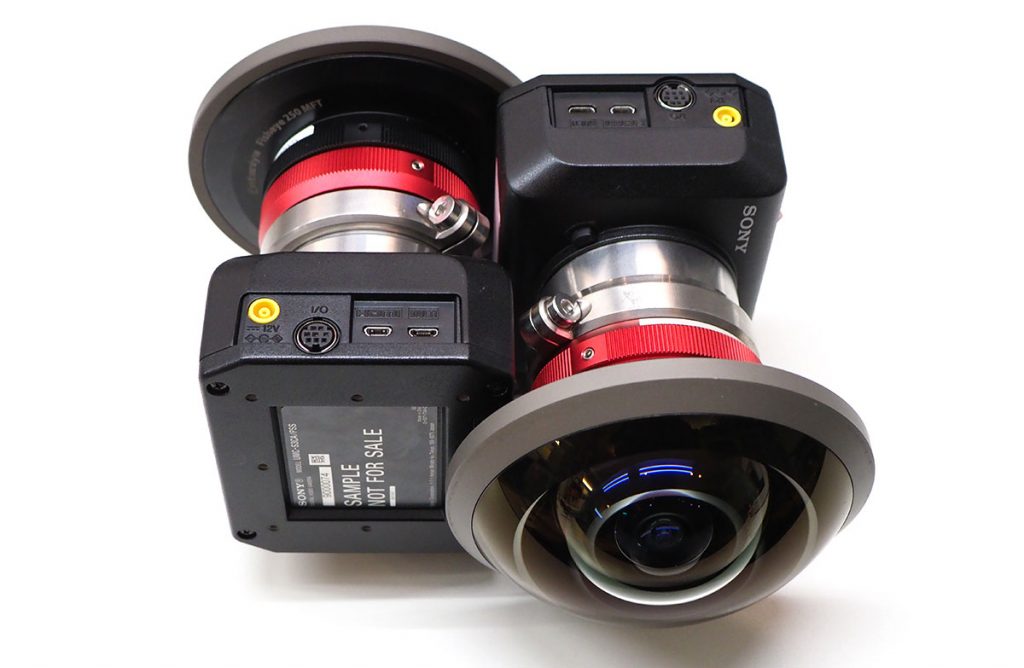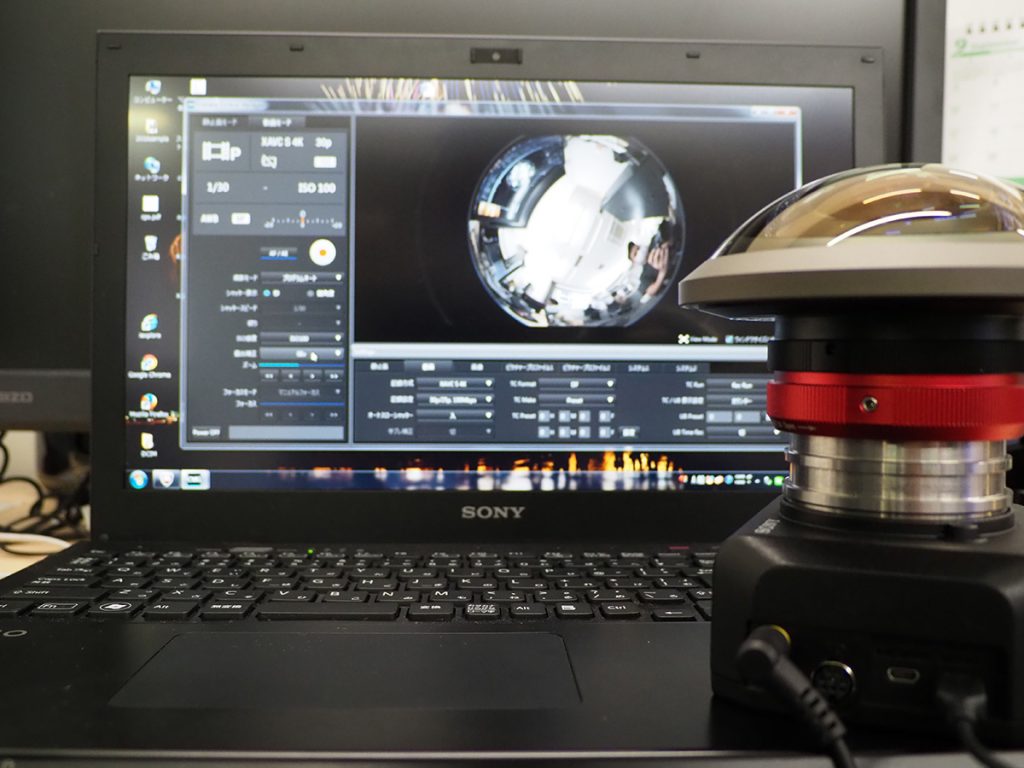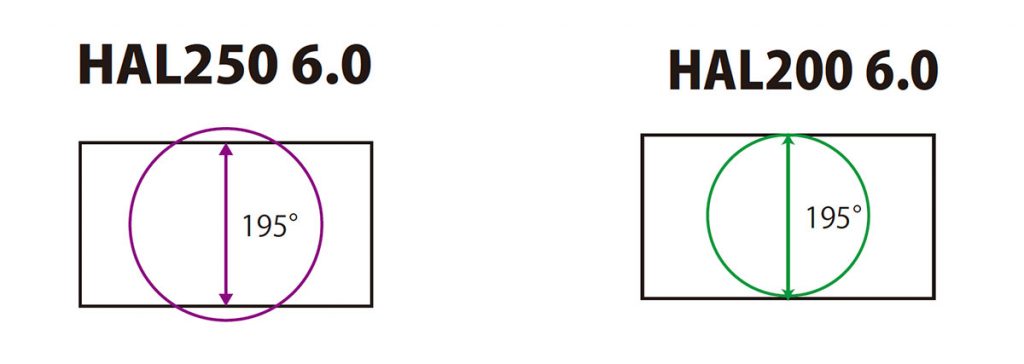
SONY UMC-S3CA
High-sensitivity 4K camera
The SONY UMC-S3CA is a professional camera that can shoot in 4K.
It has the same sensor as the SONY α7SM2, which is generally sold as a high-sensitivity camera.
This camera is very good at shooting in the dark.
I paired this camera with the Entaniya Fisheye HAL250 E 6.0 to test a 360-degree shot.

Camera Control Manager
The SONY UMC-S3CA can be operated by using the dedicated software Camera Control Manager. The camera needs to be connected to a PC to set up.
Camera Control Manager is a desktop application that can set the same item as the interface of the mirrorless camera of SONY.
SONY UMC-S3CA has no shutter button or setting button, so you have to connect with PC before shooting.
Genlock
UMC-S3CA is equipped with Genlock function, which is very advantageous for 360VR shooting and other applications where multiple cameras are used simultaneously.
To enable Genlock, use Blackmagicdesign’s Sync Generator (Mini Converter Sync Generator).
System configuration

Shooting samples
Video shot with the UMC-S3CA gives the same results as the Sony a7SM2, and it also supports S-log and still photography.
The image is softer because of the low-pass filter, but I think you’ll get better results if you’re shooting at night or at close quarters. Even in near-darkness with almost no lights, you can get a beautiful image with little noise.
Image Circle

The MC-S3CA is a full-size sensor camera that can shoot 16:9 with almost no cropping.
The best lens to use is the Entaniya Fisheye HAL250 E 6.0 or the Entaniya Fisheye HAL200 E 6.0.
Summary
The UMC-S3CA is an industrial camera generally used for surveillance cameras, so it is difficult to handle for general video shooting applications due to problems with handling and user interface.
However, the support for Genlock is a huge advantage.
In this test, I used two 250-degree lenses and set the camera to the front and back to challenge 360VR.
The Entaniya Fisheye HAL200 with a 200 degree lens can be used for 3D Stereo 180VR since it is a circumferential fisheye.
The advantage of using a wide-angle fisheye lens is that it allows you to record a wide area with a small number of cameras.
In the case of conventional HD cameras, there was a problem with the use of a wide-angle lens, where the resolution was insufficient and the details could not be seen. However, with 4K, it is possible to check every detail of the image, so it is likely to be used in a variety of applications.

